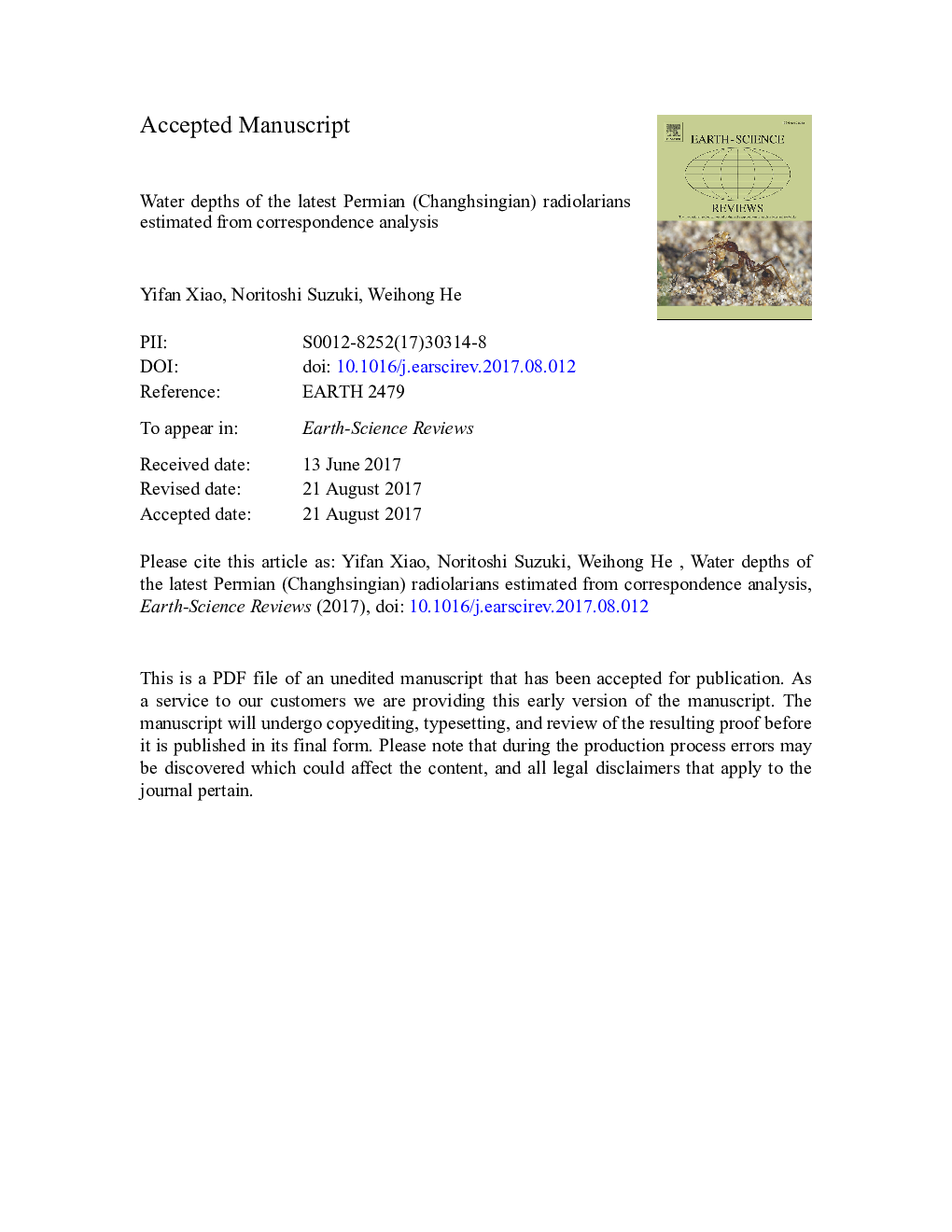| کد مقاله | کد نشریه | سال انتشار | مقاله انگلیسی | نسخه تمام متن |
|---|---|---|---|---|
| 5785056 | 1639929 | 2017 | 98 صفحه PDF | دانلود رایگان |
عنوان انگلیسی مقاله ISI
Water depths of the latest Permian (Changhsingian) radiolarians estimated from correspondence analysis
دانلود مقاله + سفارش ترجمه
دانلود مقاله ISI انگلیسی
رایگان برای ایرانیان
کلمات کلیدی
موضوعات مرتبط
مهندسی و علوم پایه
علوم زمین و سیارات
زمین شناسی
پیش نمایش صفحه اول مقاله

چکیده انگلیسی
This paper briefly summarizes current knowledge on water-depth indicators in Permian radiolarians, and compares this knowledge with observational evidence for water-depth indicators in living radiolarians. Studies on modern radiolarians demonstrate the feasibility of estimating floating depths at the species level, but not at higher taxonomic levels. This apparently contradicts the common assumption that the Subfamily Copicyntrinae indicates shallow water, and the Order Albaillellaria deep water in the Permian. We approach this contradiction in water-depth distributions by using a statistically driven correspondence analysis (CA), which so far has never been used for Permian radiolarian studies. CA was applied to multivariate meta-datasets of the Changhsingian Dalong Formation of South China and of pelagic deep cherts from Japan because the depositional water depths from these successions have been well studied and the evidence is reliable. These two regions belonged to the same low-latitude region in the Lopingian (Late Permian) based on fusulinids and tectonic reconstructions. The CA results indicate that the output Dimension 1 largely represents depositional water depths, from very shallow (positive value) to deep (negative value), and Dimension 2 seems to be closely related with siliciclastic input. Following the scores along Dimension 1, the nine examined sections were categorized into five water-depth zones: 'very shallow' (Xinmin and Shangsi), 'shallow' (Pingdingshan and Hushan), 'upper intermediate' (Rencunping), 'middle intermediate' (Dongpan), and 'lower intermediate-pelagic deep' (Gujo-hachiman, Itsukaichi and Shikoku). This order roughly agrees with empirical water-depths based on palaeontological and geological evidence. Based on this water-depth order, species were categorized into five water-depth zones (14 very shallow-water species, 18 shallow-water species, 14 upper intermediate-water species, 39 middle intermediate-water species, and seven lower intermediate- to deep-water species). For the first time, our data also statistically prove that Entactinaria and Spumellaria did not live in very deep water and that most Latentifistularia and Albaillellaria species are upper intermediate- to deep-water species. This result partly supports the utility of water-depth indicators at the taxonomic order level in the Late Permian.
ناشر
Database: Elsevier - ScienceDirect (ساینس دایرکت)
Journal: Earth-Science Reviews - Volume 173, October 2017, Pages 141-158
Journal: Earth-Science Reviews - Volume 173, October 2017, Pages 141-158
نویسندگان
Yifan Xiao, Noritoshi Suzuki, Weihong He,